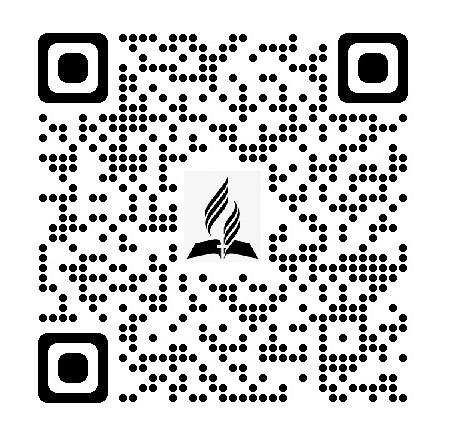
Stephen
Terry, Director
 ;
;

The
Seal of God and Mark of the Beast: Part 1
Commentary
for the June 10, 2023, Sabbath School Lesson
 "Then I saw the beast and the kings
of the earth and their armies gathered together to
wage war against the rider on the horse and his army. But the beast was
captured, and with it the false prophet who had performed the signs on its
behalf. With these signs he had deluded those who had received the mark of the
beast and worshiped its image. The two of them were
thrown alive into the fiery lake of burning sulfur. " Revelation 19:19-20,
NIV
"Then I saw the beast and the kings
of the earth and their armies gathered together to
wage war against the rider on the horse and his army. But the beast was
captured, and with it the false prophet who had performed the signs on its
behalf. With these signs he had deluded those who had received the mark of the
beast and worshiped its image. The two of them were
thrown alive into the fiery lake of burning sulfur. " Revelation 19:19-20,
NIV
Since the last half of the 18th century, Seventh-day
Adventists have taught that the Beast power is the Papacy. As one can imagine,
this has resulted in little love between Catholics and Adventists. While it was
before my time, in the 1980s I was told by older members of the Seventh-day
Adventist Church in the city where I attend church, a city with a Jesuit
university, that when a Seventh-day Adventist evangelist would come to town and
preach this perspective on the Mark of the Beast, sometimes dead animals would
be left on the front steps of the church as a warning. But far from
intimidating the speaker, this was pointed to as the type of persecution the
papacy was famous for and was seen as confirmation of the evangelist's message.
This attitude toward the Catholic Church may have
some foundation with Martin Luther's "Ninety-Five Theses" publicly nailed to
his church door. It certainly spared no effort in pointing out evils present in
Catholicism. His efforts to reform Catholicism were opposed by the papacy and
contributed to the Protestant/Catholic schism. Hundreds of thousands died in
the resulting bloody wars that followed as the Papacy sought to re-establish
supremacy and Protestantism resisted. The strife was further aggravated by the
contesting parties being backed by civil governments and the armies they
controlled. Civil government began enforcing religious dogma as far back as the
4th century. After more than a millennium of doing so, they were not
amenable to solving things any other way. This had a profound impact on the
Western mindset. Because of all the bloodshed, the hatred between Catholics and
Protestants ran deep. Religion allied with government became suspect, and when
the United States Constitution was written a prohibition against the government
enforcing religious dogma was included. That it was listed first in the Bill of
Rights reveals how important the new American nation considered it to be. When
North America was colonized some of the colonial governments were enforcing
religious belief to the extent that the Puritans of New England were known to
jail and even murder Quakers who came within their domain. The state of Rhode
Island was founded in the 17th century because the Puritans drove
out Roger Williams for his non-conforming religious toleration. In response, he
established a colony based on religious toleration and separation of church and
state, setting the precedent for that First Amendment.
A leopard cannot easily change its spots, however.
When a flood of Irish immigration washed upon the shores of the United States in
the 19th century, and the number of American Catholics increased
proportionately, the old animosities were rekindled. Often disguised as a thin
veneer of racism where they were refusing to hire, rent to, or feed the Irish,
the reality was that it was their evident Catholicism that made them the
targets of good, Protestant Americans who were here before them. The new
immigrants quickly learned that things in America were more like the Old World
than many Americans would admit, and that those with political power made the
rules. As they learned how to achieve and maintain power in America, more or
less of a truce came about in the civil arena, with invectives limited to
weekend homilies. Most were able to relegate these tirades to church affairs
and maintained their distance from such ideas during the rest of the week when
civil government and laws held sway.
It was in this milieu of Irish immigration and the
ensuing anti-Catholic turmoil that the Seventh-day Adventist Church came into
being. It would be unnatural to expect them to not be shaped by that when they
witnessed on American streets battles that they had heard of in the religious
wars of Europe. Here was the Beast raising its head again. It must be the Time
of the End. The Apocalypse must have seemed very imminent to them a hundred and
fifty years ago. When we couple this with Adventism's Shut Door Theology which
taught that the door to salvation had been shut to everyone except Adventists,
it must have looked like the whole world was wondering after the Beast. This
appeared especially true when Seventh-day Adventists adopted the biblical
Sabbath, something which almost all of Christendom, Catholic and Protestant
alike, had tossed into the dust bin. This made it easy to see the entire world
in black and white, those who honored the Sabbath and those who did not. This
continues to be a line of demarcation between those who follow the Beast and
the faithful for many Adventists.
It did not help when some civil governments,
ignoring the Constitution, established Blue Laws that prohibited businesses
from opening on Sundays. When I was in the Army in Texas in the 1960s, that
state had Blue Laws that prohibited the sale of certain items on Sunday.
Department stores set aside certain aisles for the banned items and covered
those shelves on Sundays to prevent sales. That is no longer the case as many
of those laws were set aside because of court challenges based on the First
Amendment. However, in Adventist minds, when they saw the Blue Laws going into
effect, it seemed the next logical step would be to outlaw observance of the
biblical Sabbath. The Beast was about to reign and put his Sunday mark on
everyone. But instead, everything went the other direction, and except for a
few murmurs now and then about re-establishing those Blue Laws, there is not
imminent apocalyptic persecution of Sabbath keepers. Does that mean there won't
be? I think everyone will answer that question for themselves. Those who want
to believe that there will be a national Sunday law with transgression being a
capital crime will continue to believe that despite any evidence to the
contrary. But I believe Jesus sets up a far more likely scenario for deciding
between the saved and the lost in a parable in Matthew, chapter 25.
The essence of the Parable of the Sheep and the
Goats is the contrast between those who are self-centered and those who are
selfless. Of course, it is not as black and white as the parable paints it. As
with all things the normal distributions is a Bell
Curve. A minority will fall at either extreme of the
curve. Some will be narcissistically selfish, while some at the other end will
be sacrificially selfless. So, what happens to the majority
of us who fall in between those two extremes? Jesus makes it clear that
selfless love for others is the goal, but how much selfishness is allowed in
the mix to still be saved? Will being mostly selfless be enough? There is an
answer, but we need to realize what that answer is whether we are looking at
this parable or the Seal of God versus the Mark of the Beast.
We tend to see the Mark of the Beast only as black
or white. People with the Seal of God, the Sabbath for Seventh-day Adventists,
are saved, but people who either have the Mark of the Beast in their foreheads,
meaning they agree completely with the Beast, or that have the mark in their
hands, meaning they are going along with the Beast for expediency while not
really agreeing with the Beast's agenda, those are all lost. The problem with
that view is it makes no allowance for grace. It seems perfectly natural for
someone exiled to the barren island of Patmos to respond with a tome that says,
"God is going to get you for that!" But it doesn't seem to fit with Jesus who
taught that love is the highest good. John certainly picked up on that in his
epistles. Its absence from Revelation causes it to look like someone else was
writing it. Martin Luther did not want to include it in his German Bible,
because he felt it didn't belong, later relenting and including it. That
decision leaves the rest of us to struggle with the dissonance of John's "God
is love" and the bloody death and destruction of Revelation. The symbolism of
that book is cryptic which allows leeway in interpreting it in such ways as to
impugn and vilify one's enemies, real or imagined. But if we use that
flexibility to hurt others socially or physically, God's love does not cease
and his grace continues to offer us a better way.